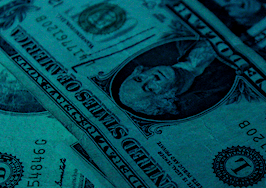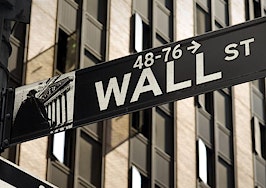This past week has been quiet in anticipation of the five-ring circus in the week ahead.
The program: G7 meetings underway now and through the weekend, the Kim-Jong Un summit and European Central Bank (ECB) on Tuesday, the Fed on Wednesday and the Bank of Japan (BOJ) on Thursday. Each event can have significant economic effect, including immediate changes in interest rates
Before handicapping the relative impact of each pending performance, a surprise! A retired lion-tamer has just entered the center ring! Although this time accompanied by an odd-looking dog.
Retired Fed Chair Ben Bernanke said yesterday: the new tax cuts and federal spending “make the Fed’s job more difficult all around … stimulus at the very wrong moment is going to hit the economy already at full employment in a big way, and then in 2020 Wile E. Coyote is going to go off the cliff.”
Bernanke is not given to intemperate remarks and may modify these in days ahead. However, as a forecaster he is hard to argue with. Just this: we can hope that the tax bill was so badly crafted that it does not stimulate, but rather just lines the pockets of the lucky.
G7 discord
The circus rings in chronological order, beginning with the G7. The G7 are Canada, Italy, France, Germany, UK, Japan and the U.S. As a group, the “West,” are the legacy winners and losers of World War II, who took the vow never to do it again, and the center of global economic cooperation. It used to be G8, but Russia was expelled after invading Ukraine.
Among the leadership of the G7 and their peoples, President Trump is by a wide margin the most-disliked U.S. president ever. Emanuel Macron of France yesterday tweeted in English: “The American president may not mind being isolated, but neither do we mind signing a six-country agreement. Because these six countries represent values, they represent an economic market which has the weight of history. No leader is eternal. We inherit commitments which are beyond us. We take them on. That is the life of nations.”
Departing for the meeting, Trump wished for reinclusion of Russia. Nebraska Republican Senator Ben Sasse today: “Putin is not our friend and he is not the President’s buddy. He is a thug using Soviet-style aggression to wage a shadow war against America, and our leaders should act like it.”
Ouch. The direct cause of economic unpleasantness in the 1930s was the breakdown of international cooperation. G7 discord, if it grows and includes China, would be an economic suppressant, including pushing down interest rates although at a cost not worth paying.
The ECB on Tuesday
The ECB is still buying 30-billion euros-worth of IOUs every month, and maintaining a cost of money at negative 0.4 percent. Claims of healthy European growth ring hollow in light of that on-going stimulus and core inflation barely above 1 percent.
ECB effects are likely to be perverse. If it begins to stop its IOU-buying, in theory interest rates would run up in a colère du temper; however, past ECB suggestions of tapering have brought the opposite.
Withdrawing stimulus invites a weaker economy and lower rates. Also, the ECB will soon change leadership from Mario Draghi and his “whatever-it-takes” to a new president. Since ECB founding in 1998 the Europeans have not allowed a German president (so far, Dutch, French and Italian), and the Germans are becoming insistent. A German ECB president may not be as reluctant as the others to have a recession named after him.
Also on Tuesday, the Kim/Trump summit. Oddsmakers assume a non-event. Posturing without real progress, although retreating some distance from the imminent threat of military action. Given the volatility of the parties, no telling. If it does not go well, fear in markets pushes money to U.S. bonds and rates go down.
The big show Wednesday: the Fed
It will increase the overnight cost of money from 1.75 percent to 2.00 percent, taking “prime” to 5.00 percent for the first time since 2008. The big question for housing: will long-term rates also rise 0.25 percent, putting mortgages astride 5.00 percent?
The answer will depend in part on what the Fed says. The Fed’s neutral rate — neither tight nor easy — is defined as the rate of inflation, now presumably 2.00 percent plus some body-English and Kentucky-windage, which varies from time to time (a lot), today perhaps another half-percent.
The heart-stopping moment, gasps from the crowd will be when Chair Powell sticks his head into the lion’s mouth. He will volunteer or certainly be asked, how close are you to “done?” Will you stop at neutral, wait for possible inflation data? Or ooch your way on past neutral?
I suspect that Powell will struggle to get away with “too soon to tell,” and further suspect that the Fed may be past neutral on the tight side now at 2.00 percent. Evidence: the Fed has pushed 10s up, not inflation. More evidence: despite Bernanke’s sense of stimulus, if it were truly hyper-goosing the economy we would see it by now.
The 10-year T-note has been within an inch of 2.90 percent since January, mortgages similarly close to 4.75 percent. In the past two months, the 10-year spread to the two-year Treasury has been locked at 0.45 percent. If the Fed is already on the tight side, 10s will rise only a little above 3.00 percent, mortgages still below 5.00 percent, and the 2s-10s spread will close — all indications that the Fed will pause after another hike or two.
If the spread does not close, 10s and mortgages rising with Fed funds, that will suggest the Fed is on a necessary pre-emptive course intending to skim the froth off the economy.
Oh — the BOJ on Thursday. By then the crowd will have left. Nobody around but the custodians sweeping up after the elephants. The BOJ has lost its freedom of action (a caution to all), Japan is so deeply in debt to itself that the BOJ in perpetuity will attempt to hide it from sight.
US 10-year T-note in the last year:

Fed-predictive two-year T-note:

The Atlanta Fed GDP Tracker is smoking in Q2, but in large part a natural rebound from weak consumer spending in the first quarter:














